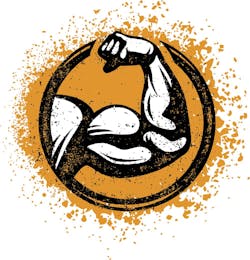Many small business owners measure their success by how much their revenue increases year over year. In business magazines, entrepreneurs who have managed to open many stores in a short time are lionized.
But is that what you want? Maybe for you, it’s not about growing bigger, but growing stronger.
If you’re the best guy in town at doing switchgear installations, how do you want your business to grow? You could diversify into also doing lighting jobs. Maybe toss in some residential work. Now your revenue is going to be much bigger than it was last year.
Does that mean your business is better? You’re now split between your area of expertise and two other areas that are very different. How do you allocate resources among jobs in these different areas? How do you allocate yourself?
Your business stood out in the switchgear market because you’re the best guy in town. But you’re near the bottom for lighting and residential work. And because of your lack of expertise in residential, several homeowners gave you bad reviews on Yelp. How does that affect your switchgear business?
Getting bigger can mean getting weaker. You want your business to get stronger. If you’re already the best switchgear installer in town, how can you get stronger in the switchgear business?
You could hire a design and applications engineer. That’s not going to come cheap, plus this person will need extensive training by the manufacturers. If your customers are having issues with figuring out what they need, then this is probably a good investment.
Maybe this isn’t the way to go. Now consider that if you’re the best guy in town, there’s someone else who is No. 2. And he hates it. Like Avis, he’s going to try harder. How can you stay No. 1? Are you No. 1 by very much? Probably not, so how can you widen the lead?
Think of the issues that are important to customers. For example:
- Installation time. If you take 25% less time than anyone else, that’s a big competitive advantage. How can you improve your tools and processes to reduce the time of individual tasks and the total time on site?
- Fit and finish. The plant engineer likes showing the plant manager the shiny new switchgear absent any “cabinet finish customization.” Scratches and paint scuffs are not the kinds of calling cards you want to leave, so how do these occur and what techniques can be used to prevent them?
- Accuracy and quality of work. Do you have a work methodology that prevents “simple, stupid” things like connections to the wrong terminals? What about ensuring every connection is made correctly?
And let’s talk about price. Customers like to give the impression that they are price-sensitive, but if you are the best guy in town and can show why that is the case, you can probably command a significant premium over the “lesser thans” you compete with. Yes, you could do the kind of work these other outfits do at the price they charge, but your work is done right the first time, and that is worth something.
Do you need to lower your price, even though you are the best guy in town? First, lower your costs so you can increase your margins with existing pricing. Drive out wasteful cost through better tooling, better methodology, and better training.
Doing this will grow your business stronger, perhaps more than any one thing. The increase in quality could make the need to lower your prices go away entirely. But if not, you’ll lower them with fatter margins than otherwise, and “No. 2” will have to try much harder than before.
About the Author

Mark Lamendola
Mark is an expert in maintenance management, having racked up an impressive track record during his time working in the field. He also has extensive knowledge of, and practical expertise with, the National Electrical Code (NEC). Through his consulting business, he provides articles and training materials on electrical topics, specializing in making difficult subjects easy to understand and focusing on the practical aspects of electrical work.
Prior to starting his own business, Mark served as the Technical Editor on EC&M for six years, worked three years in nuclear maintenance, six years as a contract project engineer/project manager, three years as a systems engineer, and three years in plant maintenance management.
Mark earned an AAS degree from Rock Valley College, a BSEET from Columbia Pacific University, and an MBA from Lake Erie College. He’s also completed several related certifications over the years and even was formerly licensed as a Master Electrician. He is a Senior Member of the IEEE and past Chairman of the Kansas City Chapters of both the IEEE and the IEEE Computer Society. Mark also served as the program director for, a board member of, and webmaster of, the Midwest Chapter of the 7x24 Exchange. He has also held memberships with the following organizations: NETA, NFPA, International Association of Webmasters, and Institute of Certified Professional Managers.
